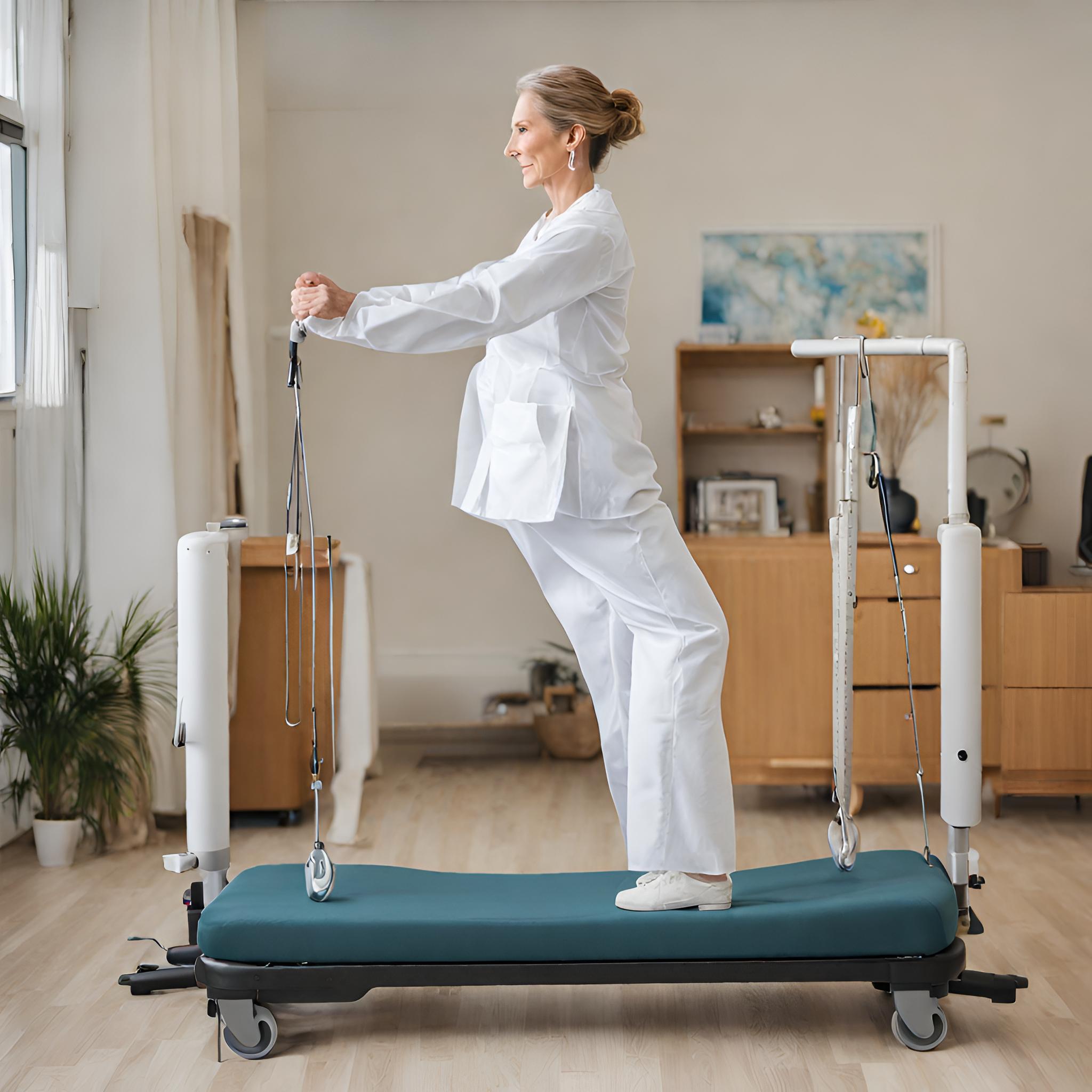Understanding Arthrofibrosis and its Management through Physiotherapy
Table Of Contents
- Introduction
- Understanding Arthrofibrosis
- Causes of Arthrofibrosis
- Physiotherapy’s Role in Arthrofibrosis Management
- Conclusion
Introduction
Arthrofibrosis is a medical condition characterized by the excessive formation of scar tissue within a joint, leading to a loss of motion and function. This condition can be debilitating, affecting individuals who have undergone joint surgery, experienced trauma, or suffered from chronic inflammation. In this blog, we will delve into what arthrofibrosis is, its causes, and how physiotherapy plays a crucial role in its treatment and management.
Understanding Arthrofibrosis
Arthrofibrosis primarily affects the knee, although it can occur in other joints like the shoulder, elbow, or hip. The condition develops when the body’s natural response to injury, surgery, or inflammation leads to an overproduction of scar tissue within the joint capsule. This excess scar tissue can restrict joint movement, causing stiffness, pain, and a decrease in overall joint function.
Causes of Arthrofibrosis
Several factors can contribute to the development of arthrofibrosis:
- Surgery: Post-operative scarring and inflammation can lead to arthrofibrosis, particularly in procedures involving joint surgeries such as knee replacements or ACL reconstructions.
- Trauma: Injuries like fractures or dislocations can trigger excessive scar tissue formation during the healing process.
- Chronic Inflammation: Conditions like rheumatoid arthritis can lead to ongoing joint inflammation, increasing the risk of arthrofibrosis.
- Infection: Joint infections can cause inflammation and scarring within the joint.
- Poor Rehabilitation: Inadequate or improper post-injury or post-surgery rehabilitation can contribute to arthrofibrosis.
Physiotherapy’s Role in Arthrofibrosis Management
Physiotherapy is a cornerstone in the management and treatment of arthrofibrosis. A well-designed physiotherapy plan can help alleviate symptoms, improve joint mobility, and prevent the recurrence of scar tissue formation. Here’s how physiotherapy can aid in arthrofibrosis management:
- Early Intervention: Timely physiotherapy can begin shortly after surgery or injury, aiming to prevent the excessive buildup of scar tissue by promoting proper joint mobilization and range of motion exercises.
- Range of Motion Exercises: Physiotherapists employ specific exercises to improve joint flexibility and reduce stiffness. Passive, active-assisted, and active range of motion exercises are tailored to the individual’s condition.
- Strengthening Exercises: Strengthening the muscles around the affected joint can enhance stability and support, reducing the strain on the joint itself. This can also prevent the development of compensatory movement patterns.
- Manual Therapy: Hands-on techniques, such as joint mobilization and soft tissue manipulation, can help break down scar tissue, improve circulation, and restore joint function.
- Pain Management: Physiotherapists utilize various modalities like ultrasound, heat, or ice to manage pain and inflammation associated with arthrofibrosis.
- Education and Home Exercises: Patients are educated on self-management techniques and provided with home exercise programs to continue their rehabilitation outside of clinic visits.
- Gradual Progression: Physiotherapy plans are tailored to the patient’s progress, ensuring that exercises and interventions are gradually intensified to prevent re-accumulation of scar tissue.
- Postural Correction: Correcting posture and movement patterns is crucial to reduce joint stress and prevent the development of arthrofibrosis.
Conclusion
Arthrofibrosis is a challenging condition that can significantly impact an individual’s quality of life. However, with a well-structured physiotherapy plan, patients can experience significant improvements in joint mobility and function. Early intervention, proper exercise protocols, and ongoing support from physiotherapists are essential elements in managing arthrofibrosis effectively. If you or someone you know is dealing with arthrofibrosis, consult a qualified physiotherapist to develop a personalized treatment plan tailored to your specific needs.
“At Arunalaya Healthcare, we pride ourselves on being the best physiotherapy center in Delhi. Our dedicated team of experts offers top-notch physiotherapy treatment tailored to your needs. Experience the difference with the leading physiotherapy clinic in Delhi area. Our commitment to excellence ensures that you receive the best physiotherapy care possible. Trust Arunalaya Healthcare for the best physiotherapy treatment in Delhi. Our advanced physiotherapy solutions set us apart as the premier choice for your rehabilitation needs. When it comes to physiotherapy, our center stands out as the best in Delhi. Choose Arunalaya Healthcare for comprehensive physiotherapy solutions that deliver results. Visit Arunalaya Healthcare today and discover why we are the best physiotherapy center in Delhi.”
Physiotherapist in Patel Nagar | Physiotherapist for Home Visit in Patel Nagar | Physiotherapy in Patel Nagar | Best Physiotherapist in Patel Nagar | Physiotherapist Near Me | Physiotherapy Near Me | Best Physiotherapist in Delhi | Best Physiotherapist in India | Physiotherapy Center in Patel Nagar | Spine Clinic Near Me | Back Pain Physiotherapy Near Me | Sports Physiotherapist in Delhi | Stroke Physiotherapy | Paralysis | Cerebral Palsy | Best Sports Injury Physiotherapist in Delhi | Best Sports Injury Physiotherapy in Delhi | Physiotherapy Home Service | Physiotherapy at Home | Home Visit Physiotherapy | Advanced Physiotherapy in Delhi | Physiotherapy Clinic Near Me | Chest Physiotherapy Near Me



